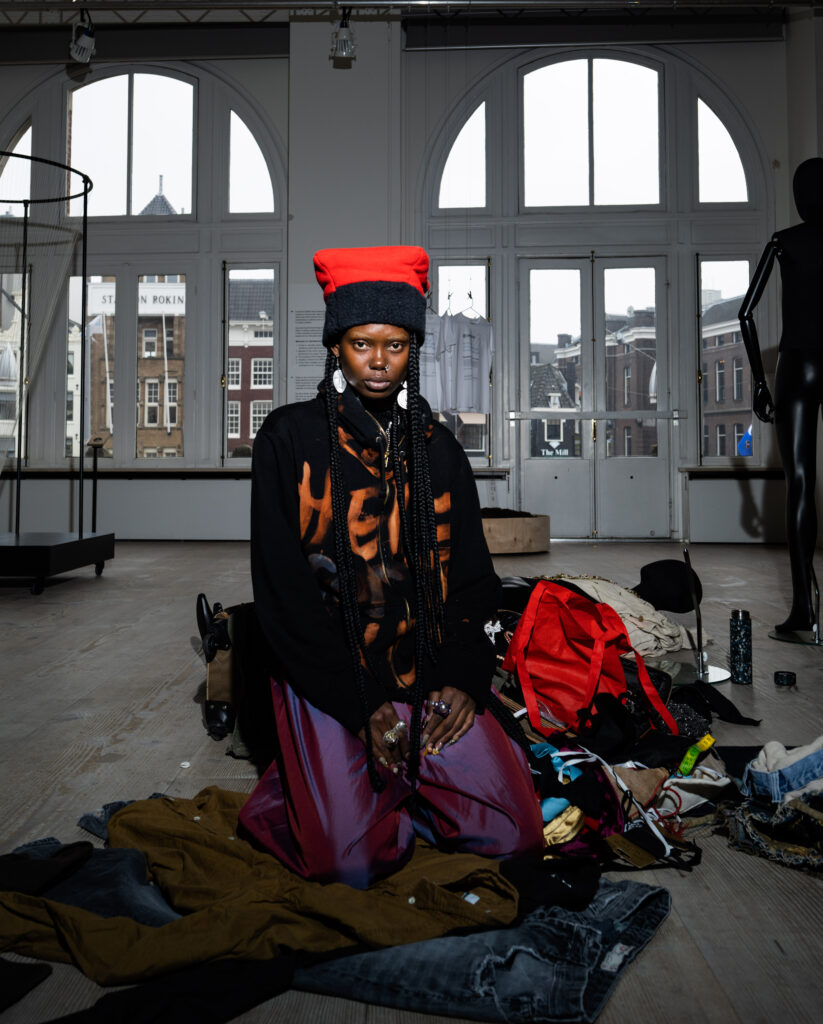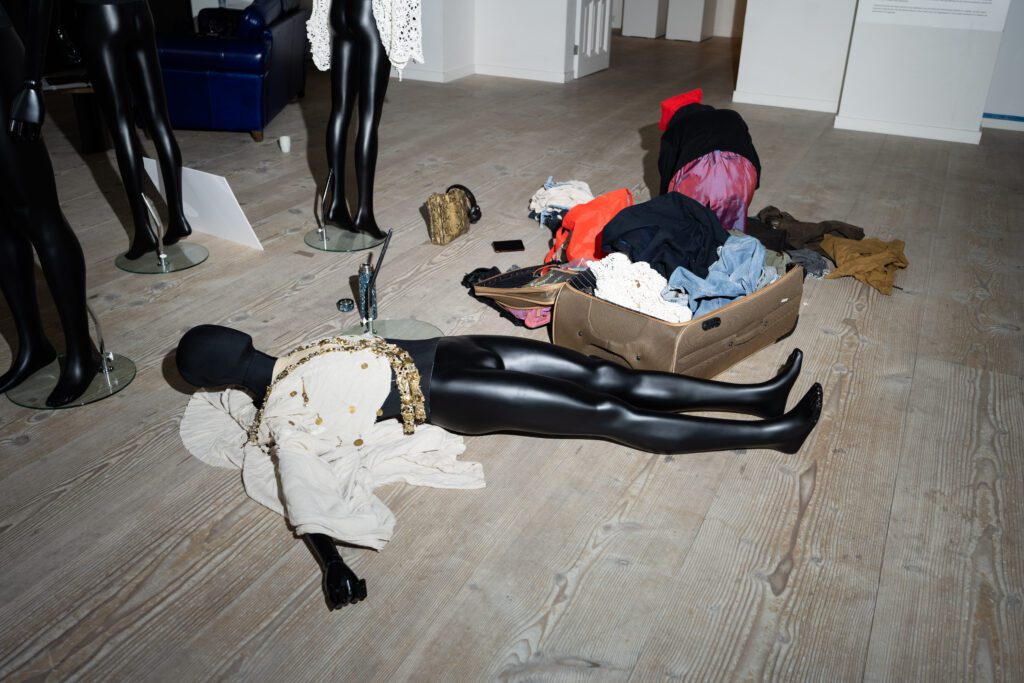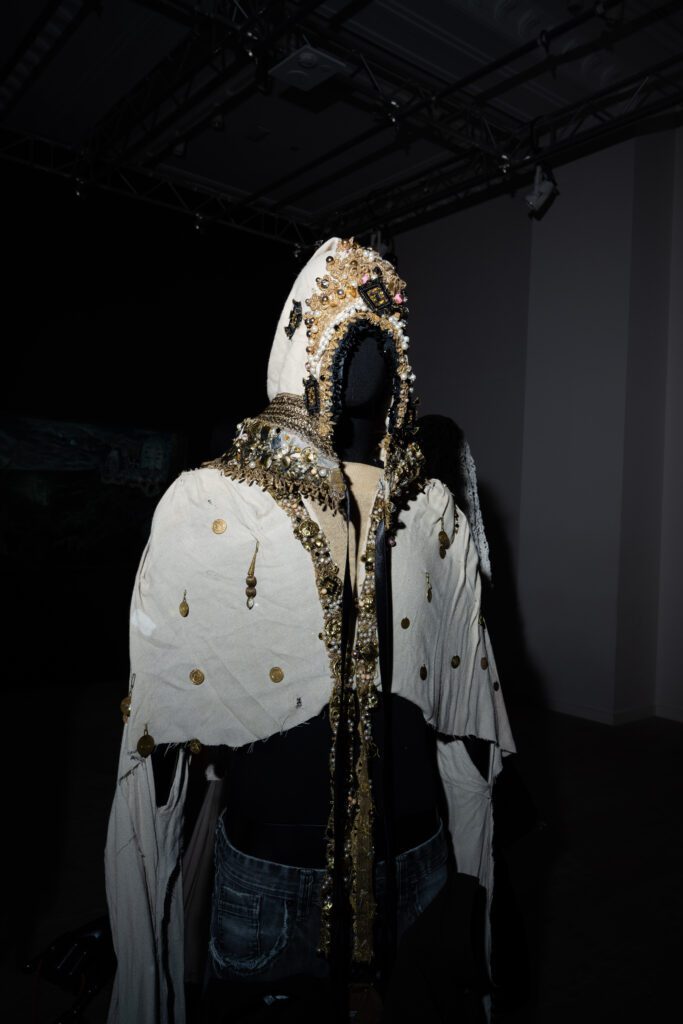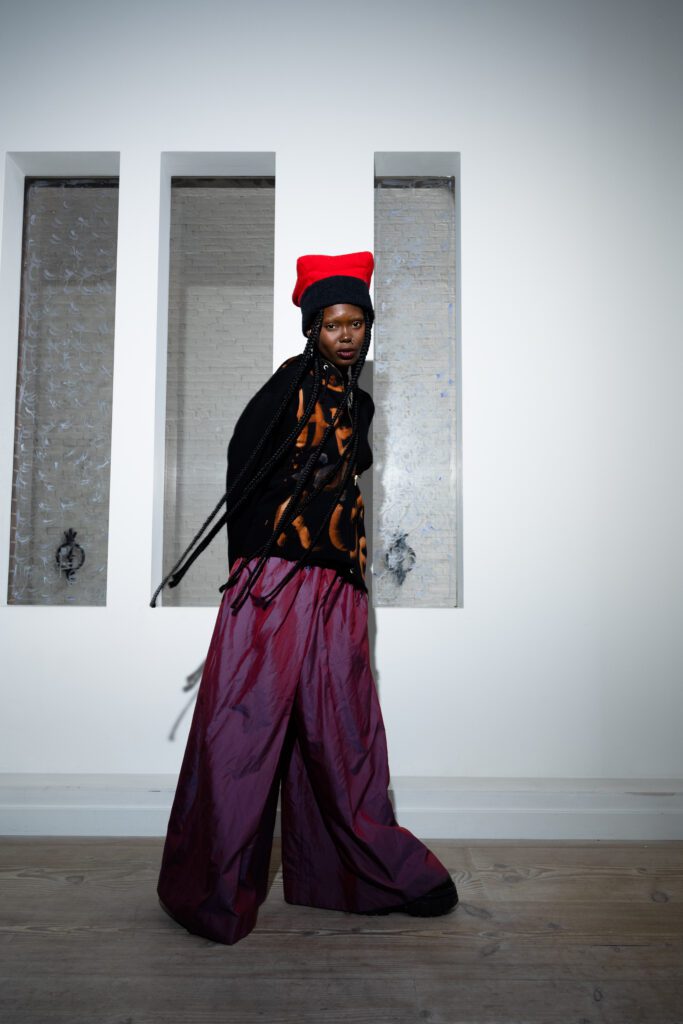In October 2022, the Fashion for Good Museum in Amsterdam opened its current exhibition Knowing Cotton Otherwise. With cotton being a very layered and multifaceted subject, the curators decided to reflect the ongoing conversation through an exhibition that evolves and therefore comes in three phases. In February of this year, the museum opened its doors for us to explore the second phase, titled Bodies of Work, with added installations referring to both human and non-human entities.
Tricia Nganga Mokosi is one of the artists who contributed to the second chapter of the exhibition with an installation called Everything, everywhere all at once, which consists of four outfits made through the use of second-hand and found cotton materials. Being a designer, stylist, art director, and model makes Tricia, who is based in Amsterdam, as multifaceted as the four looks she created. For her, it’s almost difficult to pick one single thing that she loves to do since she likes “to create in the broadest sense possible” often relating to fashion. An example is the African mask she made for herself, followed by two artists who saw her craft and asked the designer to create masks for them. Next to that Tricia, who describes her style as eclectic, recently completed two projects as a designer for theatre costumes. She explains, “I do a lot of things, but the main thing is that I’m creating with my hands,” which she describes as meditation. Being an over-thinker, she says that creating is “releasing things that are bottled up.”
Making outfits from found cotton materials for performers turned out to be somewhat of a challenge. Working with cotton in its original state meant dealing with a stiff material. The fact that these outfits had to be made for dancers, who are used to performing in tight or stretchy clothing, forced Tricia to think outside of the box. She says, “That’s why I had to rework some of the pieces to make them more flowy.” While she struggled with some pieces, she also talks about the experience showing her what she’s capable of when thrown into a situation like this.
Reusing and reworking materials in her creations happened organically when she had garments that would fit and look nice but, in her opinion, needed a little something. From there on, she started bleaching some of her clothing, adding fabric on the sides of pants, which led to cutting up pieces. After this, she actively began to look for garments to rework into new pieces. To Tricia, working with leftover materials is a source of inspiration and a challenge leading her to create “more authentic pieces.” She says, “There is less waste, and I get more satisfaction out of the process,” which she describes as a long process she loves every part of.
While at the beginning of this project, her thoughts were tied to the performers and making the perfect looks for them, along the way, she realised that it is best to let that go and work with the material. It gave her more room to explore various possibilities. The rule to only use one material made her focus on textures by, for example, turning converse sneakers into corsets and reworking a crochet blanket into a top and headpiece. What intrigues Tricia about a second-hand garment are “all the hands that touched it and wore it” previously and giving the piece multiple lives by adding more meaning and energy.
Seeing the four looks not only in the museum but also come to life through dancers during the opening performance felt good to her because the audience got to see the pieces in movement, which Tricia describes as a “different perspective than when you see them static.” It reinforces the storyline since, to her, “every look is a character, and the dancers really embodied that and brought it to life.” She continues, “I always design for Black bodies, I always design for people that look like me, so it was nice to get the opportunity to make looks that are maybe not expected, because often when designing for Black bodies and working with cotton people go for denim, and I did not want to make four denim looks.”
The base of her inspiration is always African spirituality, metaphysics and nature, as well as identity and self-expression. The colours, and techniques she used reflect this in the form of a passionate red, purifying white and draping techniques. Another source of inspiration are the people she surrounds herself with and asks for feedback. For Tricia, collaborating and working with people from her community creates a sense of safety and makes communicating easier. At the end of our conversation, she says it comes down to the fact that “it’s nicer to achieve certain goals when you can say I did this with my people.”





